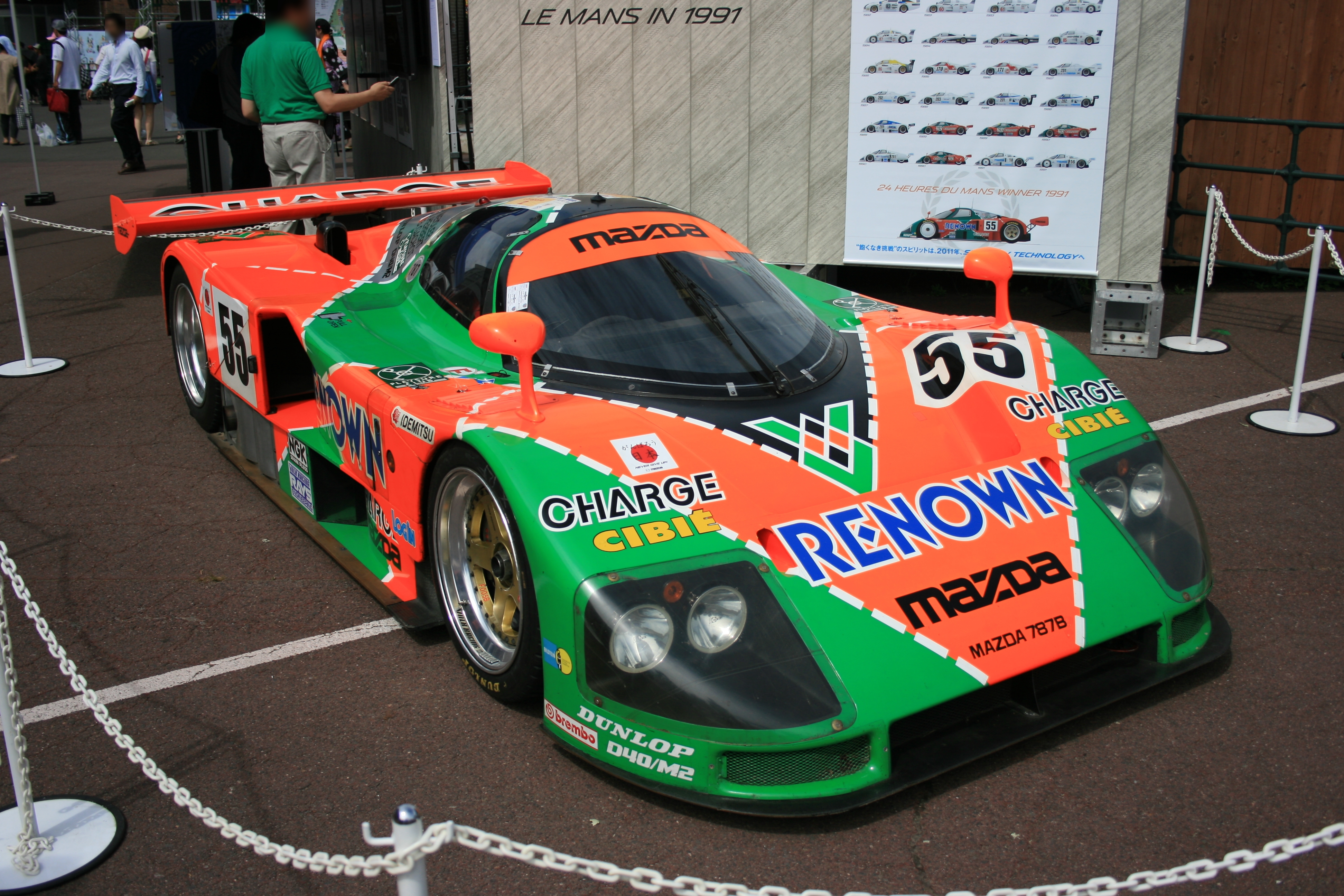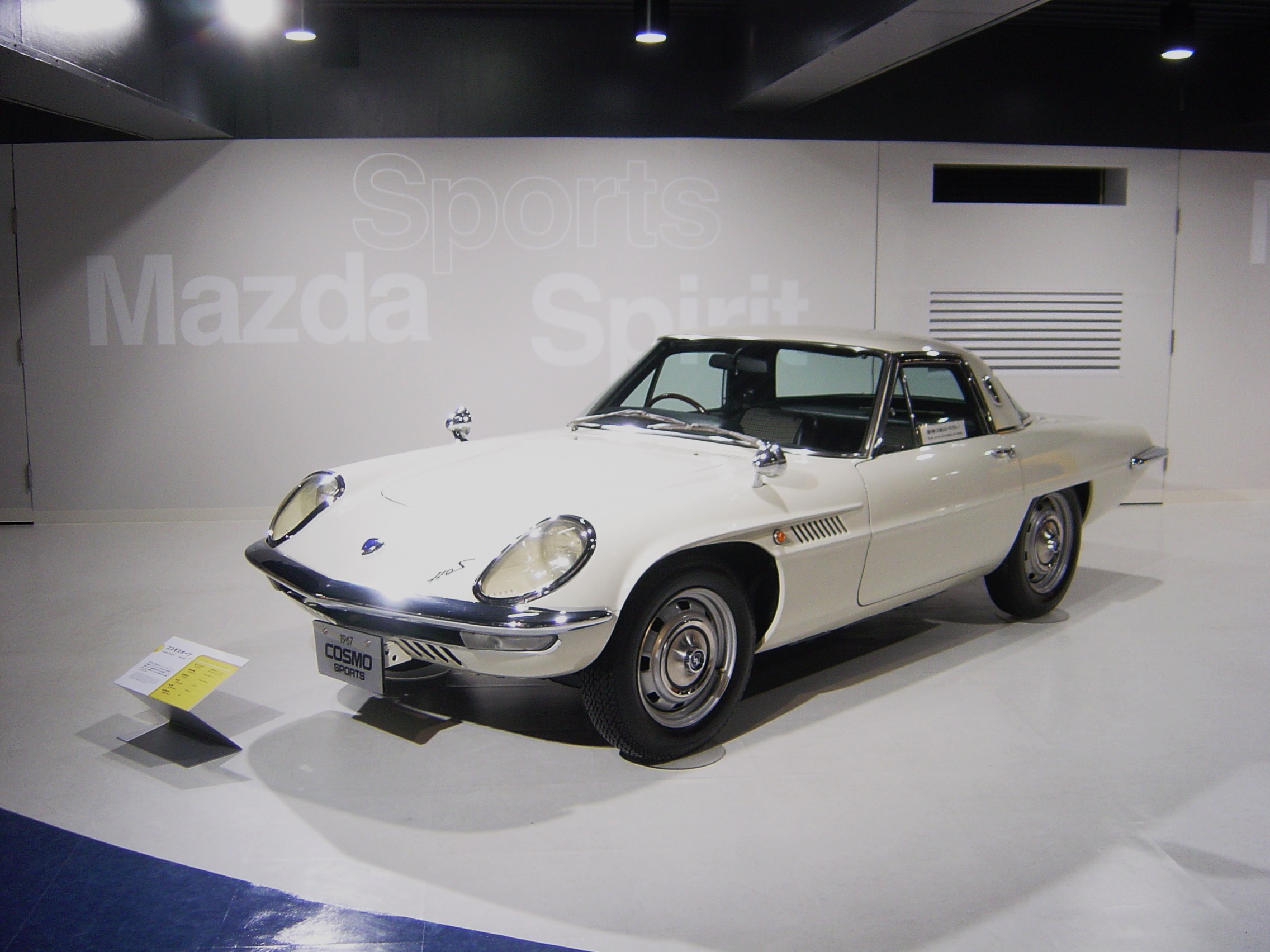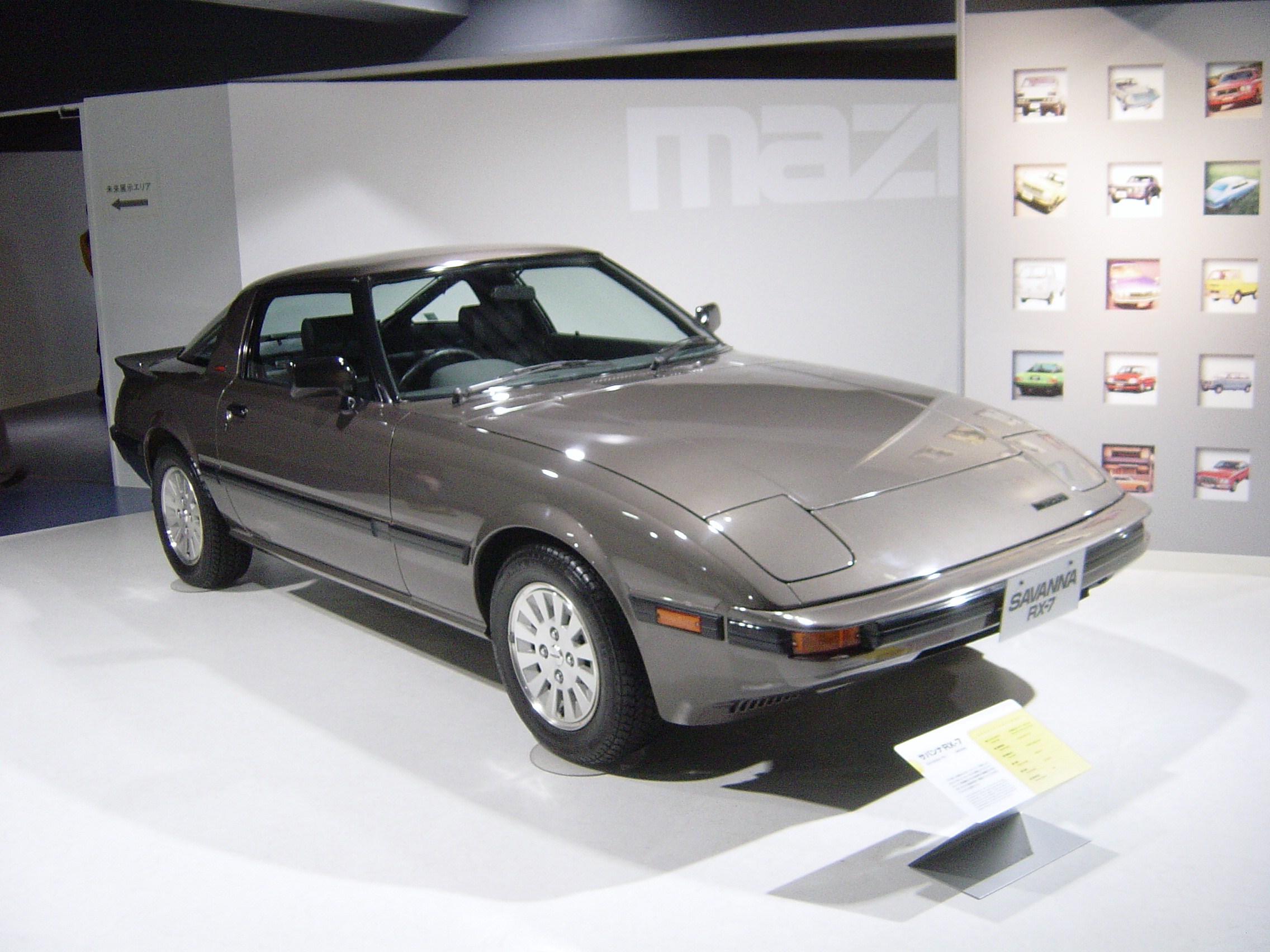|
Mazdaspeed
(often stylized in all-caps as MAZDASPEED) was Mazda's in-house performance division. The company was a grassroots racing team in Japan. Owned by Mazda Motor Corporation, they built production model vehicles, became involved in motorsports development, and offered performance parts and accessories. Mazda has phased out Mazdaspeed branding and has not offered a Mazdaspeed trim since the 2013 Mazdaspeed3. History Mazdaspeed began in 1967 as "Mazda Sports Corner", an independent racing team and tuning operation run by Takayoshi Ohashi, who also ran Mazda's Tokyo distributor. They competed in numerous events at home and abroad, and they were also competitive at the 24 Hours of Le Mans races in the early 1980s, with the 717, 727, and 737. Mazda brought the racing team to Hiroshima in 1983, where the name became Mazdaspeed. In 1991 Mazdaspeed's 787B won at Le Mans a feat no other Japanese team managed until Toyota did in 2018. Mazdaspeed also prepared the Lantis & Familia for the ... [...More Info...] [...Related Items...] OR: [Wikipedia] [Google] [Baidu] |
Mazda3 MPS (BL) – Frontansicht, 22
The Mazdaspeed3 is a sport compact hatchback introduced for the 2007 model year by Mazdaspeed and produced until 2013. The Mazdaspeed3 is a performance-enhanced version of the 5-door Mazda3. Mazda unveiled the Mazda3 MPS (Mazda Performance Series) at the Geneva Motor Show#2006, 2006 Geneva Motor Show in February. The same model is sold in North America as the Mazdaspeed3 and as the Mazdaspeed Axela in Japan. The vehicle is front-wheel drive and powered by a turbocharged inline-four gasoline engine. The Mazdaspeed3 was designed prior to the latest generation of hot hatches, including the Dodge Caliber, Dodge Caliber SRT-4, Ford Focus ST, and the Volkswagen Golf, Volkswagen Golf/Rabbit GTI. The engine produces a power output of and of torque. The Mazdaspeed3 also features a limited slip differential. The Mazdaspeed3 is the company's first hot hatchback since the Mazda Familia#Familia_GT-X,_GT-R_and_GT-Ae, BG Familia GT-X of the early 1990s. __TOC__ First generation (2007–20 ... [...More Info...] [...Related Items...] OR: [Wikipedia] [Google] [Baidu] |
Mazdaspeed3
The Mazdaspeed3 is a sport compact hatchback introduced for the 2007 model year by Mazdaspeed and produced until 2013. The Mazdaspeed3 is a performance-enhanced version of the 5-door Mazda3. Mazda unveiled the Mazda3 MPS (Mazda Performance Series) at the 2006 Geneva Motor Show in February. The same model is sold in North America as the Mazdaspeed3 and as the Mazdaspeed Axela in Japan. The vehicle is front-wheel drive and powered by a turbocharged inline-four gasoline engine. The Mazdaspeed3 was designed prior to the latest generation of hot hatches, including the Dodge Caliber SRT-4, Ford Focus ST, and the Volkswagen Golf/Rabbit GTI. The engine produces a power output of and of torque. The Mazdaspeed3 also features a limited slip differential. The Mazdaspeed3 is the company's first hot hatchback since the BG Familia GT-X of the early 1990s. __TOC__ First generation (2007–2009) The Mazdaspeed3 features the same turbocharged 2.3-liter MZR L3-VDT I4 engine from t ... [...More Info...] [...Related Items...] OR: [Wikipedia] [Google] [Baidu] |
Mazda MX-5 (NB)
The Mazda MX-5 (NB) is the second generation of the Mazda MX-5 manufactured from 1998 until 2005. The model continued the MX-5's philosophy of being a lightweight, front mid-engine, rear-wheel-drive roadster while featuring numerous performance improvements, however lacking its predecessor's retractable headlamps. The NB is also the only generation to feature a factory-built turbocharged variant in the form of the Mazdaspeed MX-5. Overview The redesigned MX-5 was previewed at the Tokyo Motor Show in October 1997. In February 1998, Mazda released the second-generation MX-5, production code NB, for the 1999 model year, the 1998 model year was skipped. The NB featured a more powerful engine and external styling cues borrowed from the third generation Mazda RX-7, designed in 1995 by Tom Matano. Prices in the United States, the main market for the MX-5, started at US$19,770. Although many parts of the interior and body were different, the most notable changes were the headlamp ... [...More Info...] [...Related Items...] OR: [Wikipedia] [Google] [Baidu] |
Mazda6
The (known as the Mazda Atenza in Japan, derived from the Italian '' attenzione'') is a mid-size sedan produced by Mazda since 2002, replacing the long-produced Capella/626. The Mazda6 was marketed as the first example of the company's "Stylish, Insightful and Spirited" design philosophy, followed by the Mazda2 in December 2002, the RX-8 in August 2003, the Mazda3 in January 2004, the Mazda5 in the summer of 2005, the MX-5 in October 2005, and the CX-7 in November 2006. The 2003 Mazda6 is essentially the seventh-generation Mazda 626, part of the 'G' model code family. __TOC__ First generation (GG1; 2002) The first-generation Mazda6 was launched in Japan as the Mazda Atenza in May 2002. The model lineup consisted of a four-door sedan, a four-door hatchback and a five-door wagon, marketed in North America as the "Sport Sedan", "5-Door" and "Sport Wagon", respectively. In Australia, the lineup was first available in Limited trim, as a sedan; in Classic trim as sedan, ... [...More Info...] [...Related Items...] OR: [Wikipedia] [Google] [Baidu] |
Mazda 787B
The Mazda 787 and its derivative 787B are Group C sports prototype auto racing, racing cars that were developed by Japanese automobile manufacturer Mazda for use in the World Sportscar Championship, All Japan Sports Prototype Championship, and the 24 Hours of Le Mans from 1990 to 1991. Designed to combine a mixture of the Fédération Internationale du Sport Automobile (FISA) Group C regulations with the International Motor Sports Association (IMSA) IMSA GT Championship, GTP regulations, the 787s were the last Mazda Wankel engine, Wankel rotary-powered racing cars to compete in the World and Japanese championships, using Mazda's Mazda Wankel engine#R26B, R26B engine. Although the 787 and 787B lacked the single lap pace of World Championship competitors such as Mercedes-Benz, Jaguar Cars, Jaguar, and Porsche, as well as Japanese Championship competitors Nissan Motor Company, Nissan and Toyota, the 787s had reliability that allowed them to contend for their respective championships. ... [...More Info...] [...Related Items...] OR: [Wikipedia] [Google] [Baidu] |
Mazda
is a Japanese Multinational corporation, multinational automotive manufacturer headquartered in Fuchū, Hiroshima (town), Fuchū, Hiroshima Prefecture, Hiroshima, Japan. The company was founded on January 30, 1920, as Toyo Cork Kogyo Co., Ltd., a cork-making factory, by Jujiro Matsuda. The company then acquired Abemaki Tree Cork Company. It changed its name to Toyo Kogyo Co., Ltd. in 1927 and started producing vehicles in 1931. Mazda is known for its innovative technologies, such as the Wankel engine, the SkyActiv platform, and the Kodo Design language. It also has a long history of motorsport involvement, winning the 24 Hours of Le Mans in 1991 with the rotary-powered Mazda 787B. In the past and present, Mazda has been engaged in alliances with other automakers. From 1974 until the late 2000s, Ford Motor Company, Ford was a major shareholder of Mazda. Other partnerships include Toyota, Nissan, Isuzu, Suzuki and Kia. In 2023, it produced 1.1 million vehicles globally. The ... [...More Info...] [...Related Items...] OR: [Wikipedia] [Google] [Baidu] |
Mazda In Motorsport
is a Japanese multinational automotive manufacturer headquartered in Fuchū, Hiroshima, Japan. The company was founded on January 30, 1920, as Toyo Cork Kogyo Co., Ltd., a cork-making factory, by Jujiro Matsuda. The company then acquired Abemaki Tree Cork Company. It changed its name to Toyo Kogyo Co., Ltd. in 1927 and started producing vehicles in 1931. Mazda is known for its innovative technologies, such as the Wankel engine, the SkyActiv platform, and the Kodo Design language. It also has a long history of motorsport involvement, winning the 24 Hours of Le Mans in 1991 with the rotary-powered Mazda 787B. In the past and present, Mazda has been engaged in alliances with other automakers. From 1974 until the late 2000s, Ford was a major shareholder of Mazda. Other partnerships include Toyota, Nissan, Isuzu, Suzuki and Kia. In 2023, it produced 1.1 million vehicles globally. The name Mazda was derived from Ahura Mazda, the god of harmony, intelligence and wisdom in Zo ... [...More Info...] [...Related Items...] OR: [Wikipedia] [Google] [Baidu] |
Mazda 737
The Mazda 737C is a prototype racing car that was built for Mazdaspeed for the 24 Hours of Le Mans under the Group C2 formula. It was the final evolution of the initial Mooncraft built design dating back to the 717C. It again used a 2-rotor '' 13B'' Wankel engine. Two 737Cs were entered in the 1985 24 Hours of Le Mans, finishing 3rd and 6th in the C2 class. The 737Cs were also raced in part of the 1985 World Sportscar Championship season, managing 8th place for Mazdaspeed in the C2 teams championship. In the All Japan Sports Prototype Championship The , abbreviated as JSPC, formed by the Japan Automobile Federation, was a domestic championship which took place in Japan for Group C and IMSA GTP Sports prototype, prototype cars and also featured cars that were eligible for touring car racin ..., Mazda was able to come home 5th in the constructor's championship. 737Cs later ended up in the hands of privateers for the JSPC after Mazda replaced it with the newer 757. Refe ... [...More Info...] [...Related Items...] OR: [Wikipedia] [Google] [Baidu] |
Mazda 717
The Mazda 717C is a prototype racing car built for Mazdaspeed for the 24 Hours of Le Mans under the Group C Junior formula. It was the first race car built by Mazda since the ending of their running in GT with the RX-7 in 1982. It used a 2-rotor '' 13B'' Wankel engine, similar to the production engine in the Mazda RX-7. The bodywork and chassis were actually built by Mooncraft racing with assistance from Mazda. Two 717Cs were entered at 1983 24 Hours of Le Mans The 1983 24 Hours of Le Mans was a motor race staged at the Circuit de la Sarthe, Le Mans, France on 18 and 19 June 1983. It was the 24 Hours of Le Mans, 51st Grand Prix of Endurance and was also the fourth round of both the 1983 World Sportsc ..., being the only finishers in the C Junior class, and finishing 12th and 18th overall. The following year the car would be replaced by the 727C. The Yamaha OX99-11 is said to have a similar design from the 717C. References 717C Group C cars Cars powered by Wank ... [...More Info...] [...Related Items...] OR: [Wikipedia] [Google] [Baidu] |
Mazda 727
The Mazda 727C is a prototype racing car that was built for Mazdaspeed for the 24 Hours of Le Mans in the Group C2 class. It replaced the 717C in 1984 as an evolution of the Mooncraft-built design, and used the same 2-rotor '' 13B'' Wankel engine as the previous model. Two 727Cs were entered in the 1984 24 Hours of Le Mans The 1984 24 Hours of Le Mans was the 52nd Grand Prix of Endurance, and took place on 16 – 17 June 1984. It was also the third round of the 1984 World Sportscar Championship season, 1984 World Endurance Championship. There were two big s ..., finishing 4th and 6th in the C2 class. However, a pair of Lola T616s run by B.F. Goodrich Company used the same Mazda engine and were successful in beating both 727Cs, claiming 1st and 3rd. The 727C was used a few more times in the 1984 World Sportscar Championship season, managing a mere 10th place in the C2 manufacturer's championship, behind two separate teams of privateers. The 727C was then replaced by t ... [...More Info...] [...Related Items...] OR: [Wikipedia] [Google] [Baidu] |
24 Hours Of Le Mans Teams
4 (four) is a number, numeral and digit. It is the natural number following 3 and preceding 5. It is a square number, the smallest semiprime and composite number, and is considered unlucky in many East Asian cultures. Evolution of the Hindu-Arabic digit Brahmic numerals represented 1, 2, and 3 with as many lines. 4 was simplified by joining its four lines into a cross that looks like the modern plus sign. The Shunga would add a horizontal line on top of the digit, and the Kshatrapa and Pallava evolved the digit to a point where the speed of writing was a secondary concern. The Arabs' 4 still had the early concept of the cross, but for the sake of efficiency, was made in one stroke by connecting the "western" end to the "northern" end; the "eastern" end was finished off with a curve. The Europeans dropped the finishing curve and gradually made the digit less cursive, ending up with a digit very close to the original Brahmin cross. While the shape of the character fo ... [...More Info...] [...Related Items...] OR: [Wikipedia] [Google] [Baidu] |
Japanese Auto Racing Teams
Japanese may refer to: * Something from or related to Japan, an island country in East Asia * Japanese language, spoken mainly in Japan * Japanese people, the ethnic group that identifies with Japan through ancestry or culture ** Japanese diaspora, Japanese emigrants and their descendants around the world * Japanese citizens, nationals of Japan under Japanese nationality law ** Foreign-born Japanese, naturalized citizens of Japan * Japanese writing system, consisting of kanji and kana * Japanese cuisine, the food and food culture of Japan See also * List of Japanese people * * Japonica (other) * Japanese studies , sometimes known as Japanology in Europe, is a sub-field of area studies or East Asian studies involved in social sciences and humanities research on Japan. It incorporates fields such as the study of Japanese language, history, culture, litera ... {{disambiguation Language and nationality disambiguation pages ... [...More Info...] [...Related Items...] OR: [Wikipedia] [Google] [Baidu] |







